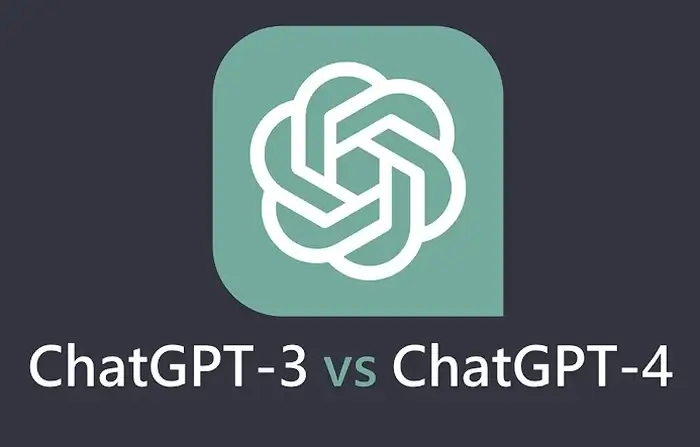I. Introduction
Brief overview of ChatGPT-3 and ChatGPT-4
Importance of understanding the differences
Key Improvements in ChatGPT-4
Enhanced Language Understanding
Introduction of more sophisticated language models
Improved contextual comprehension
Advanced Conversation Flow
Upgraded dialogue management system
Smoother transitions between topics
Handling of Complex Queries
Ability to tackle intricate questions more effectively
Better handling of multi-part queries
Performance Comparison
Accuracy
Evaluation metrics comparison between ChatGPT-3 and ChatGPT-4
Real-world performance examples
Efficiency
Response time analysis
Resource utilization comparison
Applications and Use Cases
Industry-specific applications
Customer service
Personal assistant functionalities
Task automation
Information retrieval
Scalability and Resource Requirements
Scalability enhancements in ChatGPT-4
Resource demands comparison
Training Methodologies and Data Utilization
Training data sources for ChatGPT-3
Innovations in training methodology for ChatGPT-4
Future Prospects and Implications
Potential impact on conversational AI development
Forecasts for future iterations and advancements
Conclusion
Recap of key points discussed
Final thoughts on the evolution of conversational AI with ChatGPT-4
Introduction
In the ever-evolving landscape of artificial intelligence, the advancements in conversational AI have been particularly remarkable. Among the frontrunners in this domain are OpenAI’s ChatGPT-3 and its successor, ChatGPT-4. As we delve into the comparative analysis of these two iterations, we uncover a narrative of substantial progress and innovation. From enhanced language understanding to improved conversation flow, The differences between ChatGPT-3 and ChatGPT-4 promise a significant leap forward in AI-driven interactions. Join us as we dissect the nuances of these advancements, exploring their implications for the future of conversational AI.

Key Improvements in ChatGPT-4
Enhanced Language Understanding
The introduction of more sophisticated language models in ChatGPT-4 signifies a monumental leap in comprehension. By leveraging contextual cues more effectively, ChatGPT-4 demonstrates a heightened ability to grasp nuanced nuances within conversations. This advancement not only improves accuracy but also enriches the user experience by fostering more natural and coherent interactions.
Advanced Conversation Flow
ChatGPT-4 boasts an upgraded dialogue management system, facilitating smoother transitions between topics and responses. This refinement enhances the flow of conversation, enabling ChatGPT-4 to maintain coherence and relevance throughout extended interactions. As a result, users can expect more engaging and seamless dialogue experiences, with fewer disruptions or abrupt shifts in context.
Handling of Complex Queries
One of the most notable improvements in ChatGPT-4 lies in its enhanced capability to tackle complex queries. Through a combination of refined algorithms and expanded training data, ChatGPT-4 demonstrates remarkable proficiency in dissecting intricate questions and providing accurate, comprehensive responses. Whether navigating multi-part inquiries or deciphering ambiguous prompts, ChatGPT-4 exhibits newfound adeptness in handling the complexities of natural language processing.
Performance Comparison
Accuracy
In terms of accuracy, ChatGPT-4 showcases notable improvements over its predecessor, ChatGPT-3. Through rigorous evaluation and testing, ChatGPT-4 consistently outperforms ChatGPT-3 in various metrics, including language comprehension and response relevance. Real-world applications further validate these findings, highlighting ChatGPT-4’s enhanced capacity for generating precise and contextually appropriate responses.
Efficiency
In addition to its precision, ChatGPT-4 demonstrates greater efficiency in response time and resource management. By refining computational algorithms and streamlining processing workflows, ChatGPT-4 offers quicker replies while preserving high quality. This enhanced efficiency not only improves user satisfaction but also lessens the computational strain, making ChatGPT-4 more scalable and economically viable for real-world applications.
Applications and Use Cases
Industry-specific Applications
In sectors such as healthcare and customer service, the advancements introduced by ChatGPT-4 hold significant promise. Improved language understanding and conversation flow enable ChatGPT-4 to serve as a more effective virtual assistant, aiding healthcare professionals in patient interactions and assisting customer support agents in resolving inquiries more efficiently.
Personal Assistant Functionalities
ChatGPT-4’s enhanced capabilities extend to personal assistant functionalities, offering seamless task automation and information retrieval. Whether scheduling appointments, setting reminders, or providing real-time updates, ChatGPT-4 elevates the user experience by delivering personalized and timely assistance. From managing daily tasks to accessing relevant information, ChatGPT-4 serves as a versatile and indispensable ally in navigating the complexities of modern life.

Scalability and Resource Requirements
Scalability Enhancements in ChatGPT-4
ChatGPT-4 introduces scalability enhancements that enable it to accommodate growing demands for conversational AI solutions. ChatGPT-4 can seamlessly scale to meet the needs of diverse applications and user populations by leveraging distributed computing frameworks and optimizing model architectures.
Resource Demands Comparison
Despite its advanced capabilities, ChatGPT-4 exhibits comparable resource requirements to ChatGPT-3, making it a feasible choice for organizations with varying computational constraints. ChatGPT-4 offers flexibility and scalability without imposing prohibitive resource demands, whether deployed on cloud infrastructure or on-premises servers.
Training Methodologies and Data Utilization
Training Data Sources for ChatGPT-3
ChatGPT-3 relied on extensive datasets comprising diverse sources of text data, ranging from books and articles to online conversations and social media posts. This diverse corpus of training data enabled ChatGPT-3 to develop a broad understanding of language and context, laying the foundation for its conversational capabilities.
Innovations in Training Methodology for ChatGPT-4
Building upon the success of ChatGPT-3, ChatGPT-4 introduces innovative training methodologies that further refine its language understanding and conversational abilities. From advanced data augmentation techniques to more sophisticated model architectures, ChatGPT-4 leverages cutting-edge advancements in machine learning to push the boundaries of conversational AI.
Future Prospects and Implications
Potential Impact on Conversational AI Development
The advancements showcased by ChatGPT-4 hold profound implications for the future development of conversational AI. As AI models continue to evolve and improve, we can anticipate a paradigm shift in human-computer interactions, with ChatGPT-4 paving the way for more natural, intuitive, and contextually aware conversational experiences.
Forecasts for Future Iterations and Advancements
Looking ahead, the trajectory of conversational AI appears poised for continued growth and innovation. With ongoing research and development efforts, we can expect future iterations of ChatGPT to further refine and expand upon the capabilities of ChatGPT-4, ushering in a new era of intelligent dialogue systems that blur the line between human and machine communication.
Conclusion
The comparative analysis between ChatGPT-3 and ChatGPT-4 reveals a significant stride forward in the realm of conversational AI. With enhanced language understanding, improved conversation flow, and superior performance metrics, ChatGPT-4 emerges as a formidable successor, poised to redefine human-computer interactions. As we anticipate further advancements and applications in the field, the evolution of ChatGPT underscores the relentless pursuit of innovation in AI-driven dialogue systems, promising a future where seamless and intuitive communication between humans and machines becomes increasingly attainable.



